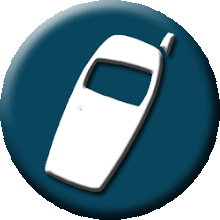We have considered how a mobile phone can send and receive calls at the same time (via an uplink and a downlink). Now we will examine how many users can be multiplexed into the same channel (i.e., share the channel) without getting interference from other users, a capability called multiple access. For 3G technology, there are basically two competing technologies to achieve multiple access: TDMA and CDMA.
TDMA is Time Division Multiple Access. It works by dividing a single radio frequency into many small time slots. Each caller is assigned a specific time slot for transmission. Again, because of the rapid switching, each caller has the impression of having exclusive use of the channel.
CDMA is Code Division Multiple Access. CDMA works by giving each user a unique code. The signals from all the users can then be spread over a wide frequency band. The transmitting frequency for any one user is not fixed but is allowed to vary within the limits of the band. The receiver has knowledge of the sender's unique code, and is therefore able to extract the correct signal no matter what the frequency.
This technique of spreading a signal over a wide frequency band is known as spread spectrum. The advantage of spread spectrum is that it is resistant to interference - if a source of interference blocks one frequency, the signal can still get through on another frequency. Spread spectrum signals are therefore difficult to jam, and it is not surprising that this technology was developed for military uses.
Finally, let's consider another robust technology originally developed by the military which is finding application with 3G: packet switching.



No comments:
Post a Comment